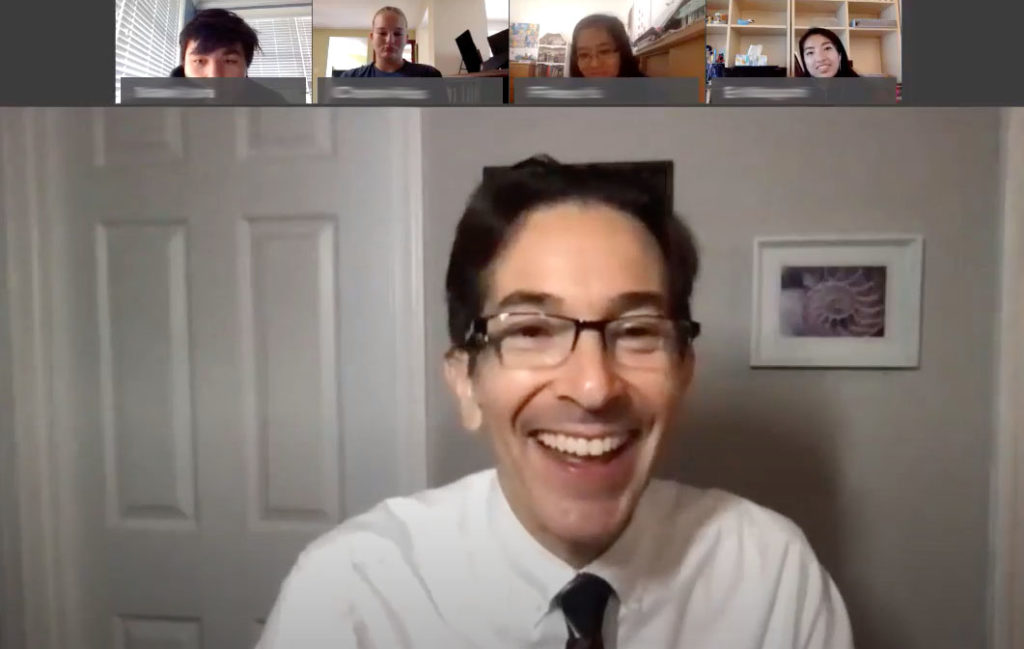By Mitch Krulewich
Academy math teacher
In addition to teaching math, I’m an advisory teacher, and I feel in some ways the distance learning platforms have allowed me to connect with my advisees in a better way. I’m meeting with them online several times a week and also individually, checking in with each kid. I’ve had some really good conversations online. They’re listening to each other, especially when there’s only four or five of them. They’re really interested in sharing how this experience is affecting them and their families.
In a way, it’s more intimate, because it’s like we’re in each other’s homes. For instance, I saw one kid was sitting next to a keyboard and asked, “Do you play piano?” So we had the opportunity to talk about that. I’m learning things I didn’t know about them, and these are seniors who I’ve known for four years. That’s been quite a positive. So I think meeting online has actually been, in some ways, more effective at connecting with my advisory students.

In advanced pre-calculus, we are delivering instruction through videos that we are preparing. The disadvantage to a video lesson is a student can’t raise a hand and ask a question. But what many of the students have said to me is, “I really like this. It’s easier to take notes because I can pause the video. If you’re going too fast, I can pause it. I can write it down. I can think about it. I can rewind it.”
I feel fortunate that I’m a math teacher. In some ways, math lends itself more readily to a video lesson than a subject matter that’s more focused on discussions. This is not to say you can’t discuss things in math, but there is certain knowledge and skills that need to be clearly explained.
In addition to the video lessons, math faculty are available for two hours each day, so students can log in and ask questions. I also have found that to be remarkably effective. The online meeting technology with WebEx allows me to project my iPad screen and work out math problems, while we still see thumbnails of each other’s faces, which I think is good because it makes for a more personal connection.

Right now, some are enjoying what they see as more freedom during distance learning. But I think eventually students will realize, “Wow, if I don’t put time and energy in, I don’t get anything out of it.” My hope is that this will focus them more on learning than on grades. I’ve told the kids for this quarter, my expectation is that you put your best effort forward, and you do the assignments that we’re asking you to do. We’re not going to be rating them in the same way as previous quarters.
I have optimism that this will focus all of us, teachers and students, more on learning, effort and growth than relative performance. It doesn’t make sense to rank students and say, “This student scored three points higher than that one,” because maybe the one who scored three points lower was babysitting their younger brother and caring for their mom, who’s sick. I mean, we don’t know those things, so I think it’s good to look beyond relative performance.
I’ve been asking students how this remote instruction feels in comparison to in-person learning, and the responses have been varied. But a lot of the kids have said, “I actually really like this, because I’m more independent. I do my work on my schedule.” I also asked them if they think this is going to create lasting changes in the way we see education and deliver instruction. Most of them think it will. They really are seeing that certain things work well over this platform. I’m amazed at how powerful these online learning platforms are, and I think we’ve only scratched the surface.
